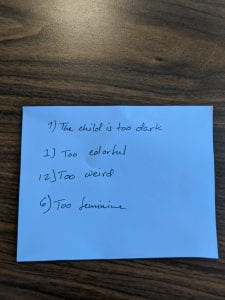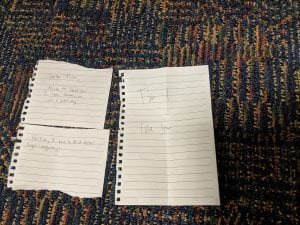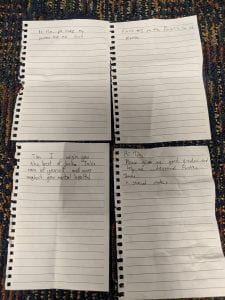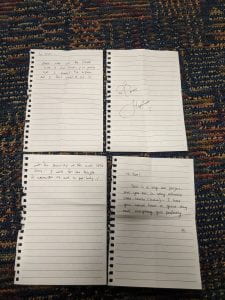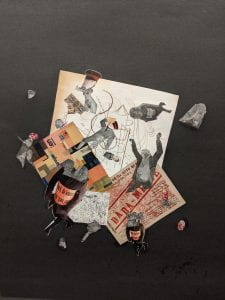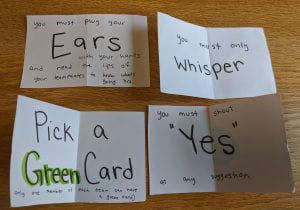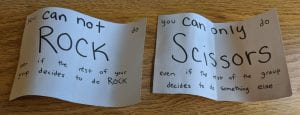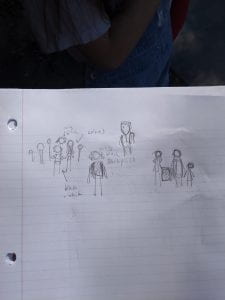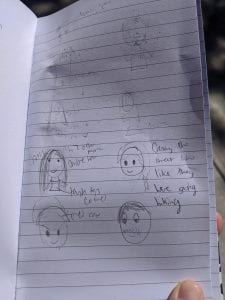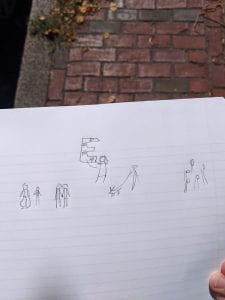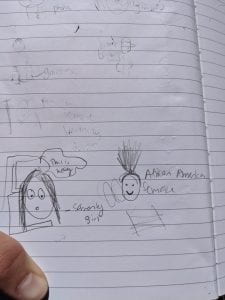My game is about creating a child, and watching it be influenced by the world. This game contains a personal message. When I came out to my mom, she cried. She said she was scared of the world hurting me because of who I was. This really affected me. I wanted to create a game that replicated this experience.
In my game, you play as a parent. Your job is to draw a child. After you draw your child, next you have to give it a name and a gift. Then, you tell your child out loud how you feel about it. The purpose of the first four steps is about having the player bond with their creation. This part represents giving birth to the child, and how a parent influences it in its early stages of growing up.
The next steps involve handing your child to another player and allowing them to add to your drawing however they want. This other player represents some influencer that affects your child during later stages of childhood. They could be a teacher, a tv show, a youtuber, an older sibling, another parent, a bully, or a best friend. Through this influencer, the child could discover something new about themselves, or be burdened with trauma. During this process, the parent cannot interact with the child, or know what it is going through, until the influencer eventually returns the child.
After this, a player appointed the Judge will go around and interact with each child. At the start of the game the judge will roll a 12-sided die four times. The result of the die will determine which rules the judge will use to grade all the children. If the judge decides the child fails the grading, the judge will rip the child. How much to rip and how harsh to grade is all up to the judge to decide. Their opinion is meant to be bias and unpredictable each new game. This part of the game presents the time when children have to enter the real world. The judge, representing society, damages the child for not meeting its unfair and bias rules a “perfect child” should meet. The set of rules I created are meant to be vague and contradicting. For example, one of the rules is “the child is too feminine”. What determines if it’s “too feminine”? Where is the line drawn? This is all up to the judge. Another rule is “The child is too masculine”. Depending on the set of rules the judge ends up using, it can be possible for no child to leave the grading alive. After the grading is done, the last step is to have the parent tell the child out loud how they feel about the child again. Is what the parent says different from what they said before?
My game takes influence from Exquisite Corpse and Yoko Ono’s scores. The players follow the instructions like they would follow a score. Each step has importance and each play-through of the game can have different results. Similar to an Exquisite Corpse, the artwork of the child is added onto throughout the game. First the parent draws it, then another player draws, until the judge finishes it.
I found successful results during play-testing the game. Both judges were vicious when it came to ripping up the children. The first judge, however, had more bias. He ripped drawings he personally liked with less force and tried to not damage the artwork too much. I also noticed that the other players were visually upset when the children were ripped. One player showed a lot of anguish towards the destruction of a child he influenced but was not the parent of.
The game’s Instructions:
Before Starting: The judge rolls a 12-sided die 4 times to determine the game’s set of laws
Player Instructions:
- Draw your child (2-3 minutes)
- Name your child
- Give your child a gift (1-2 minutes)
- Tell your child how you feel about them
- Give your child to the person to your right.
- Do whatever you want to the new child you are given. (2-3 minutes)
- Hand the child back to its parent
Judge Instructions:
- Walk up to each parent and take their child away from them.
- Rip the child according to the law
- Hand child back to its parent
Final Instructions for Parent:
Tell the child how you feel about them.
The Laws for a Perfect Child:
(Rip the child if it matches any of the below statements)
- The child is too colorful
- The child is too big
- The child is too small
- The child is too violent
- The child is too sad
- The child is too feminine
- The child is not smart enough
- The child is too rich
- The child is too poor
- The child is not human
- The child is too masculine
- The child is too weird
Examples of some children:
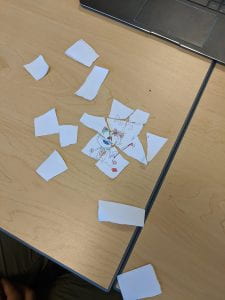


Example of a Judge’s determined rules:
